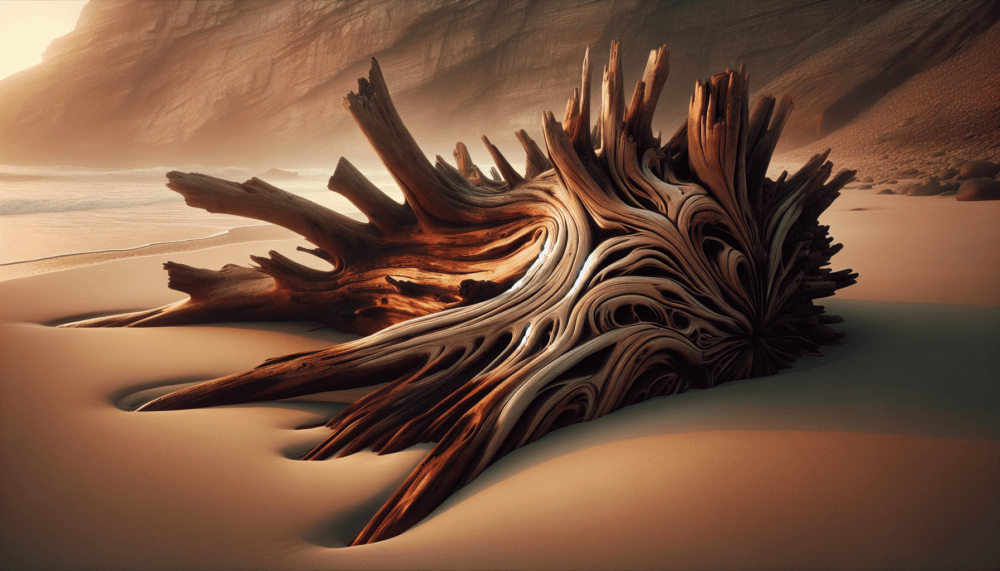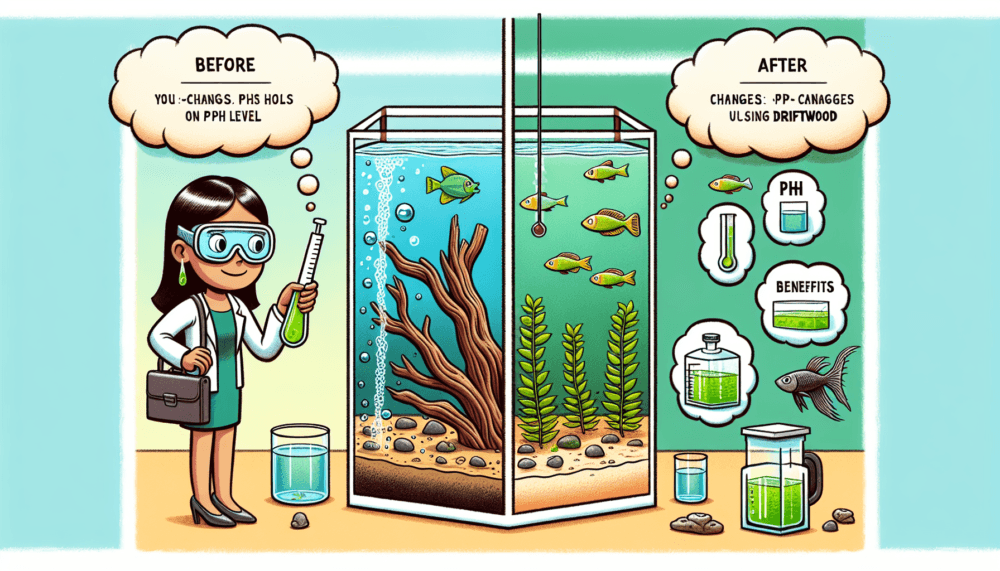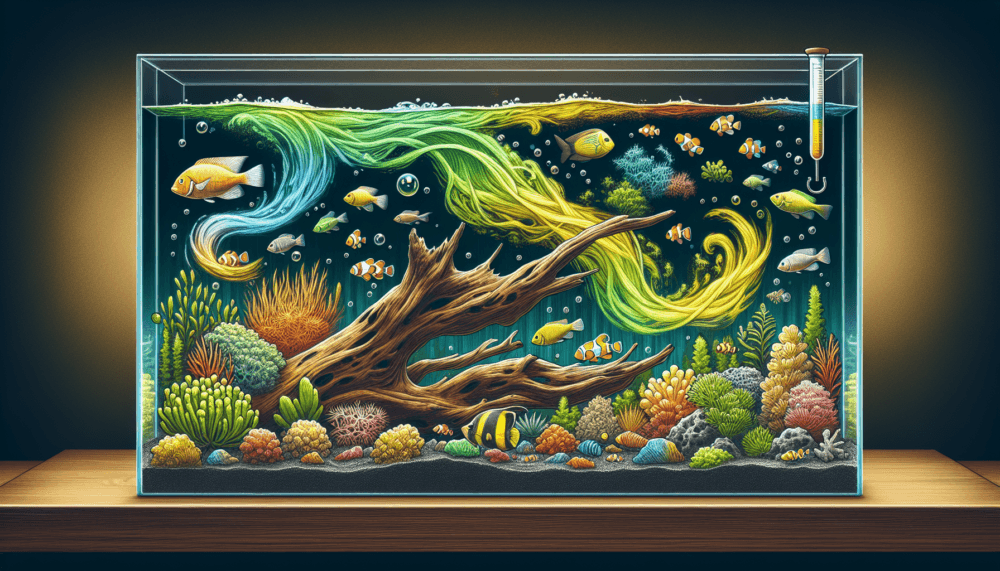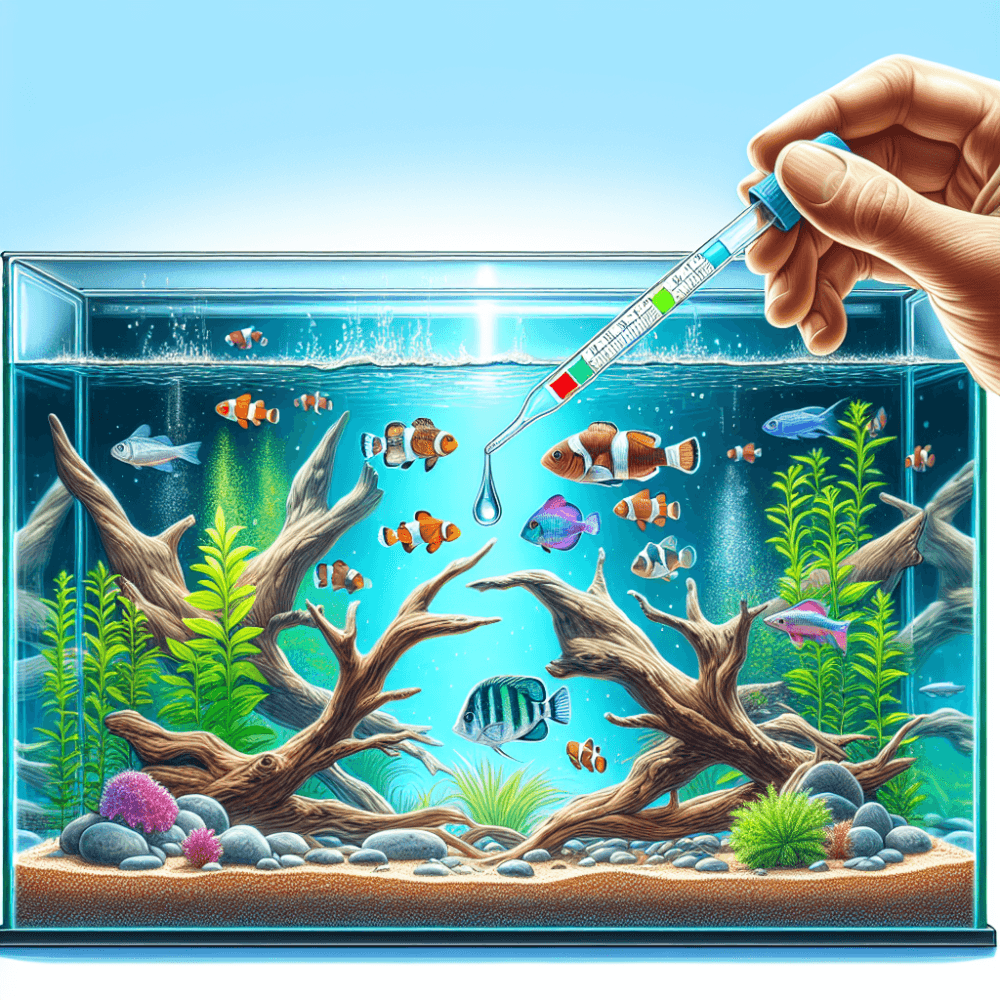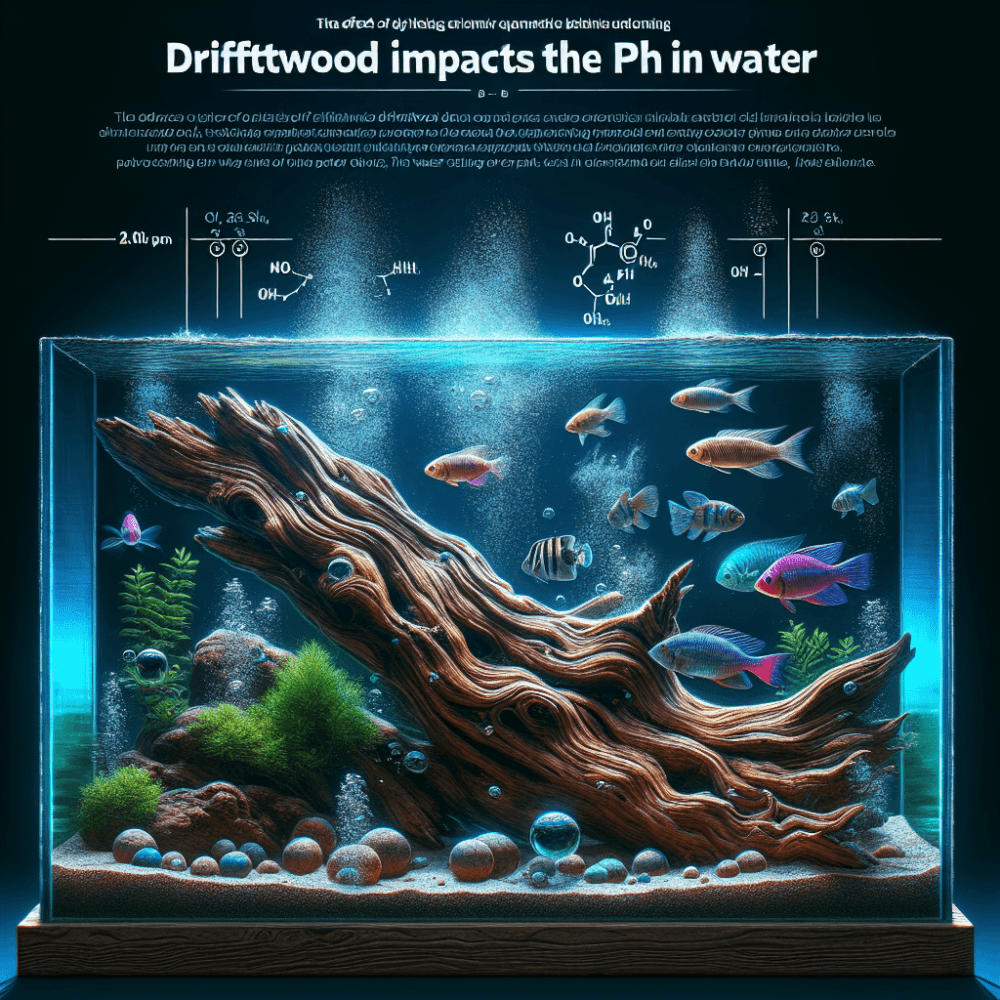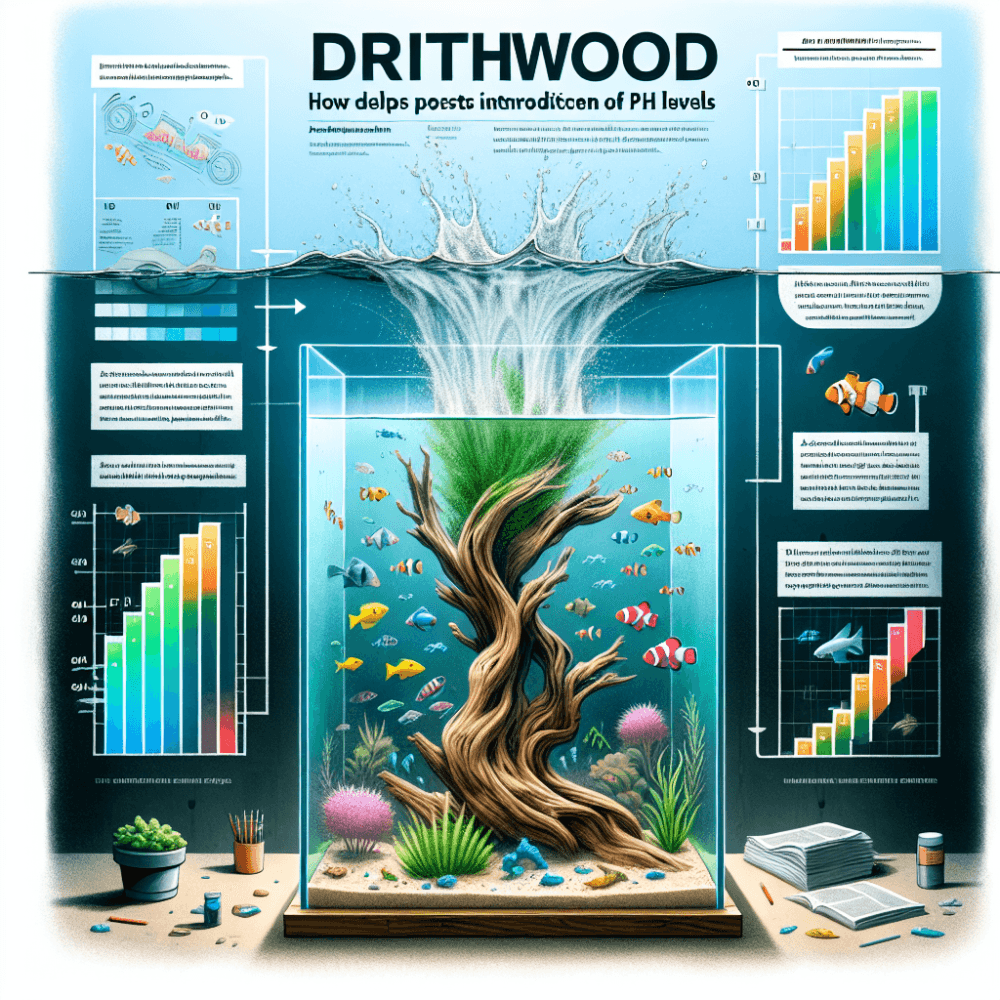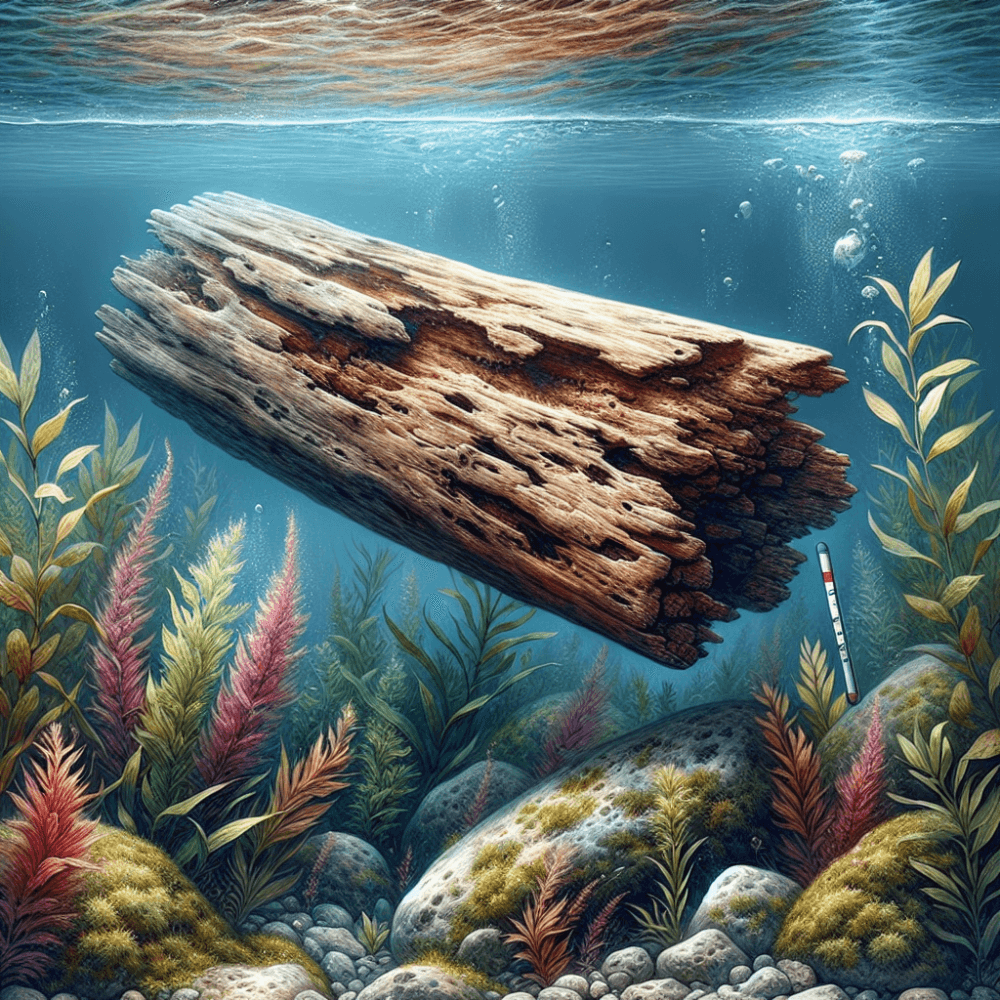Imagine sitting by a tranquil river, admiring the beauty of the driftwood scattered along the banks. Did you know that these forgotten pieces of nature have the power to influence the pH levels of water? Surprising, isn’t it? In this article, we will explore the fascinating phenomenon of how driftwood can lower pH and the impact it has on aquatic environments. So, grab a cup of tea and get ready to embark on a journey that will unveil the hidden secrets of driftwood’s role in maintaining the delicate balance of our water ecosystems.
Overview of pH and Driftwood
What is pH?
pH is a measure of acidity or alkalinity in a substance, specifically the concentration of hydrogen ions. It is a scale ranging from 0 to 14, where 0 represents highly acidic and 14 represents highly alkaline. A pH level of 7 is considered neutral.
What is driftwood?
Driftwood refers to pieces of wood that have been washed ashore by a body of water, such as rivers, lakes, or oceans. Over time, these wooden materials go through a natural process of decomposition and can be found in various shapes and sizes. While driftwood can be aesthetically pleasing, its chemical makeup also plays a role in influencing the pH levels of water in aquatic environments.
Understanding the relationship between driftwood and pH
Driftwood has the ability to affect the pH levels of water in aquariums and other aquatic habitats. This is due to its chemical makeup, which includes organic compounds and tannins. Organic compounds found in driftwood can interact with water, releasing substances that alter the pH. Additionally, the leaching of tannins from driftwood can also have an impact on pH. Understanding these relationships is essential for maintaining proper water chemistry in aquatic environments.
Chemical Makeup of Driftwood
Organic compounds found in driftwood
Driftwood is composed of various organic compounds, such as lignin, cellulose, and hemicellulose. These compounds are responsible for providing structural support to the wood. When exposed to water, these organic compounds can degrade and release substances that can affect the pH levels.
Effects of organic compounds on pH levels
The organic compounds found in driftwood can interact with water molecules through a process called hydrolysis. This reaction can release hydrogen ions, which can increase the acidity of the water and lower its pH level. The extent to which organic compounds affect pH will depend on factors such as the type of wood and the duration of exposure to water.

Leaching of Tannins from Driftwood
What are tannins?
Tannins are a group of organic compounds that are commonly found in plants, including wood. They are responsible for the brown color often associated with water that has come into contact with driftwood. Tannins have various functions in plants, including protecting against fungi and predators. When driftwood is placed in water, tannins can leach out and have an impact on the pH levels.
How do tannins affect pH?
Tannins can act as weak acids, lowering the pH of water. They can increase the acidity of the water and give it a more acidic character. The amount of tannins leached from driftwood and their subsequent effect on pH will depend on factors such as the size of the driftwood, water temperature, and the duration of exposure.
Factors influencing tannin leaching
Various factors can influence the leaching of tannins from driftwood. One significant factor is water temperature, as higher temperatures tend to increase the rate of leaching. The size and surface area of the driftwood can also play a role, with smaller pieces generally leaching more tannins than larger pieces. Additionally, the age and species of the wood can affect the amount of tannins present.
Leaching process and its impact on pH levels
The leaching process occurs when water comes into contact with the surface of driftwood. Tannins are released from the wood and dissolve into the water, gradually decreasing the pH levels. This process can take varying amounts of time, with the duration of exposure and the size of the driftwood playing a role. It is important to monitor pH levels closely when introducing driftwood into an aquarium or other aquatic environment to ensure it does not drop to dangerous levels for the inhabitants.
Decomposition and pH
Driftwood decomposition process
Driftwood undergoes a natural process of decomposition when exposed to water. This decomposition is primarily driven by microbial activity, which breaks down the organic compounds present in the wood. As the wood decomposes, it releases substances that can influence the pH levels in the surrounding water.
Role of microbial activity
Microorganisms, such as bacteria and fungi, play a vital role in the decomposition process of driftwood. They secrete enzymes that break down the organic compounds into simpler substances, releasing byproducts such as carbon dioxide, water, and organic acids. These byproducts can alter the pH of the water, shifting the balance towards acidity.
Impact of decomposition on pH levels
As the driftwood decomposes, the byproducts released by microbial activity can have a significant impact on pH levels. The organic acids, in particular, can lower the pH and increase the acidity of the water. This can be problematic for certain aquatic organisms that thrive in specific pH ranges. Monitoring and maintaining pH levels during the decomposition process is crucial to avoid any adverse effects on the aquatic environment.

Buffering Capacity of Driftwood
Understanding buffering capacity
Buffering capacity refers to a substance’s ability to resist changes in pH when an acid or base is added. It is an important concept in the field of water chemistry, as it helps maintain the stability of pH levels. Driftwood possesses a certain degree of buffering capacity that can influence the pH of the surrounding water.
How does driftwood act as a buffer?
Driftwood can act as a buffer by absorbing or releasing hydrogen ions depending on the pH of the water. When the water becomes too acidic, the driftwood can release hydrogen ions, neutralizing the excess acidity and raising the pH. On the other hand, when the water becomes too alkaline, the driftwood can absorb hydrogen ions, mitigating the alkalinity and lowering the pH.
Effect of driftwood’s buffering capacity on pH
The buffering capacity of driftwood can help maintain a stable pH range in an aquarium or other aquatic environment. It can resist sudden fluctuations in pH, ensuring a more suitable and consistent environment for aquatic organisms. However, the buffering capacity of driftwood is limited, and additional measures may be necessary to maintain optimal pH levels in certain situations.
Influence of Driftwood on Water Chemistry
Changes in water hardness
Driftwood can also have an impact on water hardness. Hardness refers to the concentration of minerals, primarily calcium and magnesium, in the water. As driftwood releases substances during decomposition and leaching processes, it can contribute to the overall mineral content of the water, affecting its hardness. This can have implications for aquatic organisms that have specific requirements regarding water hardness.
Effects on nutrient levels
Driftwood can alter nutrient levels in water due to its decomposition and leaching processes. As organic compounds break down, they release nutrients such as nitrogen and phosphorus into the water. These nutrients can then be utilized by plants and other organisms in the aquatic environment. The presence of driftwood can thus influence the nutrient balance and availability.
Altering the alkalinity and acidity
The presence of driftwood can impact both the alkalinity and acidity of water in an aquatic environment. The leaching of tannins and the release of organic acids during decomposition can increase the acidity of the water, resulting in a decrease in pH. Conversely, the buffering capacity of driftwood can help neutralize excess acidity or raise the pH if it becomes too acidic. It is essential to monitor these changes in water chemistry to maintain a suitable habitat for aquatic life.
Using Driftwood to Lower pH
Practical applications of driftwood in aquariums
Many aquarium enthusiasts utilize driftwood to lower the pH in their tanks, especially for those species of fish that prefer slightly acidic conditions. The presence of driftwood can help create a more natural and comfortable environment for these fish, mimicking their natural habitats. In addition to lowering pH, driftwood also provides hiding places and surfaces for beneficial bacteria and algae to thrive.
Considerations for using driftwood to lower pH
While using driftwood to lower pH can be beneficial, there are a few considerations to keep in mind. Firstly, the type of driftwood should be chosen carefully, as different species of wood can leach varying amounts of tannins and organic compounds. It is advisable to research and select driftwood that is known to have a minimal impact on pH and water chemistry. Regular monitoring of pH levels and water quality is also crucial to ensure that the desired pH range is maintained and that it remains suitable for the aquarium’s inhabitants.
Limitations and Risks of Driftwood
Potential challenges in controlling pH
Driftwood can introduce challenges when attempting to control pH in an aquatic environment. The leaching of tannins and the release of organic acids during decomposition can cause pH fluctuations, making it difficult to maintain a stable pH range. This can be problematic for certain species of fish and other aquatic organisms that require consistent pH conditions for their overall health and well-being. Extra care and monitoring are necessary to manage these potential challenges effectively.
Negative impacts on aquatic life
While driftwood can provide numerous benefits, it is important to note that excessive amounts or prolonged exposure to driftwood with high tannin content can have negative impacts on aquatic life. The increased acidity of water due to leaching and decomposition can be harmful to certain species, especially those that thrive in alkaline or neutral pH ranges. Additionally, the release of organic acids and other byproducts of decomposition can disrupt the balance of the aquatic ecosystem and potentially harm sensitive organisms.
Preventing overdosing of driftwood
To prevent any negative impacts on aquatic life, it is important to avoid overdosing with driftwood. This means carefully considering the amount of driftwood added to an aquarium or aquatic habitat and monitoring the pH levels closely. It may be necessary to gradually introduce driftwood and assess its impact on water chemistry and pH before adding more. Regular water testing and observation of the inhabitants’ behavior can help detect and address any issues arising from driftwood overdosing.
Other Factors Affecting pH Levels
Role of substrate and water chemistry
Apart from driftwood, the substrate and overall water chemistry can also influence pH levels in aquatic environments. Certain substrates, such as limestone or coral-based materials, can raise the pH due to their alkaline nature. Similarly, the mineral content, presence of carbon dioxide, and other dissolved substances in the water can influence pH. It is crucial to consider these factors when managing pH in aquariums and other aquatic habitats.
Temperature and its impact on pH
Temperature can affect the equilibrium between dissolved carbon dioxide and carbonic acid in water, which in turn can influence pH levels. Warmer water temperatures can decrease the solubility of carbon dioxide, resulting in a decrease in carbonic acid and a subsequent increase in pH. Conversely, cooler water temperatures can increase carbonic acid levels and lower pH. The relationship between pH and temperature is something to be mindful of when adjusting and maintaining pH in aquatic environments.
Biological processes and pH fluctuations
Biological processes, such as respiration and waste production by aquatic organisms, can also lead to pH fluctuations in water. The release of carbon dioxide and other waste products can alter the overall acidity or alkalinity of the water. The presence of driftwood, substrate, and water chemistry can interact with these biological processes, further influencing the pH levels. Monitoring and understanding these dynamics are essential for maintaining a stable and suitable aquatic environment.
Conclusion
Driftwood plays a significant role in influencing pH levels in aquatic environments. Its organic compounds, leached tannins, decomposition process, and buffering capacity collectively contribute to the changes in pH observed when driftwood is present. While driftwood can be used to lower pH and create a more natural habitat for certain species, proper consideration and monitoring are required to ensure the well-being and health of aquatic organisms. By understanding the various factors affecting pH levels and implementing appropriate measures, the use of driftwood can provide a visually appealing and harmonious aquatic environment.

